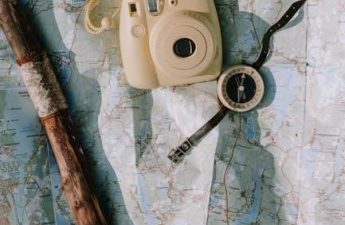Wilderness Long-Term Survival Guide⁚ Essential Planning
Effective long-term wilderness survival necessitates meticulous planning. Prioritize securing a reliable water source and constructing a sustainable shelter. A survival kit with essentials like a first-aid kit, water filter, and signaling device is crucial for initial needs and long-term success; Remember the rule of threes⁚ air, water, then food.
Immediate Priorities⁚ Shelter and Water
The initial 72 hours are critical in wilderness survival. Your immediate priorities are finding shelter and a reliable water source. Exposure to the elements can quickly lead to hypothermia or heatstroke, depending on the climate. A makeshift shelter, even a simple lean-to, provides protection from the weather and improves your chances of survival. Prioritize finding a water source before building a shelter if you are severely dehydrated. Water is essential for survival; you can only live a few days without it. Locating a clean water source and purifying it are paramount. Consider using a water filter or purification tablets from your survival kit. Remember, even seemingly clear water can harbor harmful bacteria or parasites.
While proximity to water is beneficial, avoid areas prone to flooding or those frequented by wildlife. Observe your surroundings carefully for potential dangers, such as steep slopes or unstable terrain. Selecting a sheltered location that provides protection from wind and rain will maximize your comfort and safety. Building a shelter is only one step toward long-term survival. Having access to clean drinking water is just as essential, if not more so, to your survival.
Securing a Reliable Water Source⁚ Purification and Collection
Securing a dependable water source is paramount for long-term survival. While finding a source is the first step, purifying that water is equally crucial. Unpurified water can harbor harmful bacteria, viruses, and parasites leading to severe illness. Several methods exist for water purification. Boiling water for at least one minute is a highly effective method, killing most harmful microorganisms. If boiling isn’t feasible, water purification tablets are a lightweight and convenient alternative, readily available in most survival kits. These tablets contain chemicals that effectively disinfect water, making it safe to drink.
Alternatively, you can use a water filter, a more advanced method removing sediment and many contaminants. These filters vary in effectiveness, so choose one appropriate for the potential contaminants in your water source. Collecting rainwater is another option; however, ensure the collection container is clean to avoid contamination. If using a natural water source like a stream or river, collect water upstream from any potential pollutants, such as animal carcasses or human waste. Remember, even clear water might contain invisible threats, highlighting the necessity of purification before consumption. Always err on the side of caution when choosing and treating your water source.
Building a Sustainable Shelter⁚ Materials and Techniques
Constructing a durable shelter is fundamental for long-term wilderness survival, offering protection from the elements and enhancing overall safety. The type of shelter you build will depend heavily on the available materials and the prevailing environmental conditions. Natural materials like branches, leaves, and pine boughs offer excellent insulation and can be used to create lean-tos, debris huts, or even more elaborate structures. A lean-to is a simple shelter constructed by leaning branches against a natural barrier, such as a large rock or a fallen log, creating a slanted roof that sheds water. Debris huts, on the other hand, involve layering natural materials to create a more enclosed and insulated space. The key is to ensure adequate drainage to prevent water from accumulating inside the shelter.
Consider the location carefully; avoid low-lying areas prone to flooding and areas susceptible to strong winds. Prioritize shelter construction over other tasks, as exposure to extreme weather can quickly lead to hypothermia or heatstroke. Remember to insulate your shelter effectively to maintain a comfortable temperature, especially during colder months. If you have access to a tarp or other waterproof material, incorporating it into your shelter’s design can significantly enhance its weather resistance. Adaptability and resourcefulness are key to building a successful and sustainable shelter in the wilderness.
Long-Term Sustainability⁚ Food and Resources
Securing a consistent food supply is vital for long-term survival. Learn foraging techniques to identify edible plants, and develop hunting and trapping skills for small game. Improvising tools from natural resources will aid in food preparation and resource gathering.
Foraging for Edible Plants⁚ Identification and Preparation
Foraging for edible plants can be a crucial skill for long-term wilderness survival, providing a sustainable source of nutrition. However, it’s critical to approach foraging with caution and thorough knowledge. Accurate plant identification is paramount; consuming the wrong plant can have severe consequences, even fatal ones; Before venturing into foraging, invest time in learning to identify edible plants in your specific region. Reliable field guides, expert-led workshops, or mentorship from experienced foragers are invaluable resources. Begin by focusing on easily identifiable and abundant plants to minimize risk. Start with a small amount of a newly discovered plant to check for allergic reactions before consuming a larger portion. Always prioritize plants you are absolutely certain about. Proper preparation is essential to maximize nutritional value and minimize risks. Some plants require thorough cleaning, peeling, or cooking to remove toxins or improve digestibility. Thorough preparation techniques often involve boiling or roasting to eliminate harmful substances. Remember, when in doubt, leave it out. Prioritize safety over the potential reward of a meal. Your survival depends on making correct choices. Your life is more important than any wild plant.
Hunting and Trapping Small Game⁚ Ethical Considerations
Hunting and trapping small game can be a vital part of long-term wilderness survival, providing a crucial source of protein. However, ethical considerations are paramount. Respect for wildlife and the environment must guide all hunting and trapping activities. Only hunt or trap animals you intend to consume, minimizing waste and unnecessary killing. Employ humane methods that inflict minimal suffering on the animals. Learn the appropriate techniques for clean kills and quick, painless dispatch to reduce the animals’ distress. Understand local regulations and hunting seasons; illegal hunting is detrimental to wildlife populations and carries legal repercussions. Before engaging in hunting or trapping, thoroughly research the species you intend to target, understanding their behaviors, habitats, and any legal restrictions. Respect the natural balance of the ecosystem and avoid overhunting any single species. Use traps responsibly, checking frequently to avoid unnecessary suffering. Sustainable harvesting practices ensure the long-term health of wildlife populations and the environment’s sustainability. Remember, ethical hunting is not just about providing food but also about responsible stewardship of the natural world.
Creating Tools and Utensils⁚ Improvisation and Resourcefulness
Resourcefulness is key to long-term wilderness survival. The ability to improvise tools and utensils from readily available natural materials is essential. Sharp stones can be shaped into knives or scrapers, while sturdy branches can become spears or digging implements. Strong vines or plant fibers can be used to create cordage for binding, traps, or shelter construction. Hollowed-out logs or gourds can serve as containers for water or food storage. Knowledge of local flora and fauna is crucial for identifying suitable materials. Understanding basic woodworking techniques, like carving and whittling, allows for crafting more sophisticated tools. The ability to adapt existing tools for new purposes increases efficiency. For example, a broken knife blade might be sharpened and repurposed as a scraper. Creativity and experimentation are encouraged, but always prioritize safety when handling sharp objects. By mastering these improvisational skills, you significantly increase your chances of thriving in a long-term wilderness survival scenario. Remember, resourcefulness is not just about survival; it’s about self-reliance and adaptability.
Maintaining Health and Safety
Prioritizing health and safety is paramount for long-term survival. This involves understanding basic first aid, preventing injuries, maintaining hygiene, and knowing effective signaling methods for rescue. A well-stocked first-aid kit and knowledge of wilderness medicine are essential.
First Aid and Wilderness Medicine⁚ Essential Knowledge
Comprehensive first-aid and wilderness medicine knowledge are vital for long-term survival. Beyond basic wound care, understanding how to treat hypothermia, dehydration, and heatstroke is crucial. Access to a well-stocked, comprehensive first-aid kit is essential, containing bandages, antiseptic wipes, pain relievers, and any personal medications. Consider taking a wilderness first-aid course to gain practical skills in treating injuries and illnesses in remote settings. Knowing how to improvise treatments using natural materials can be a lifesaver in situations where conventional supplies are limited. Furthermore, understanding the potential dangers of poisonous plants and animals, and how to identify and avoid them, is critical. Prevention is key; understanding how to avoid injuries through safe practices while hiking, foraging, or building shelter is just as important as knowing how to treat them. Preparedness, along with practical knowledge, significantly increases your chances of safe and successful long-term survival.
Fire Starting and Maintenance⁚ Essential for Cooking and Warmth
Fire is paramount for long-term wilderness survival, providing warmth, purifying water, cooking food, and signaling for rescue. Mastering multiple fire-starting methods is crucial; lighter, matches, and flint and steel offer varying degrees of reliability. Understanding how to prepare tinder, kindling, and fuelwood from natural materials is essential for sustainable fire building. Building different types of fires – such as a lean-to fire for cooking or a fire reflector for warmth – optimizes efficiency and safety. Maintaining a fire requires consistent attention; sufficient airflow and fuel are crucial for a long-lasting blaze. Learning to create firebreaks and manage burning embers prevents uncontrolled spread and potential dangers. Knowledge of fire safety is also critical, including how to extinguish a fire completely and safely and how to adapt fire-building techniques to varying weather conditions, such as wind and rain. A reliable, sustainable fire source significantly enhances the chances of long-term survival in a wilderness setting.
Signaling for Rescue⁚ Effective Methods and Strategies
Effective signaling is vital for increasing your chances of rescue in a wilderness survival scenario. A whistle, included in most survival kits, is a simple yet effective tool for attracting attention over long distances. Three blasts is the internationally recognized distress signal. Large ground-to-air signals are also crucial; creating a large “X” or “SOS” using bright materials like clothing or branches on a clear area is highly visible from the air. Smoke signals, generated by burning damp materials to create dark smoke, are highly visible and can attract attention from miles away. Mirrors can reflect sunlight over significant distances, providing a targeted signaling method if you can spot a potential rescuer. Remember to consider your surroundings; select a location that provides clear visibility. Maintain signaling efforts regularly throughout the day to maximize chances of being spotted. Incorporate any available technology, like a personal locator beacon (PLB) if you have one, which transmits your GPS coordinates to emergency services. Combining multiple signaling methods increases your chances of being found and aids in swift rescue.


